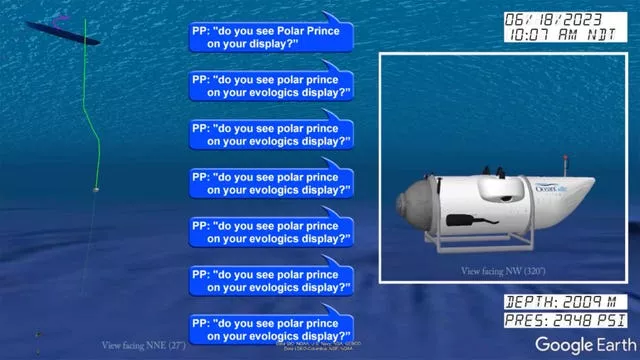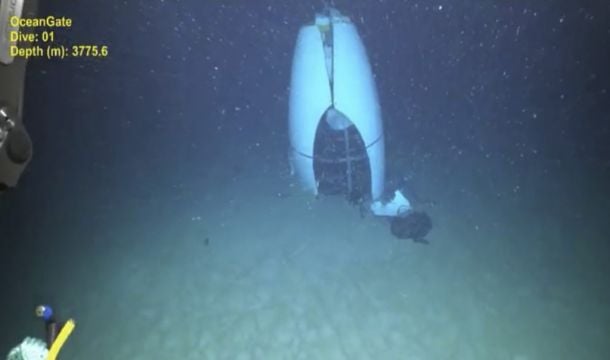Witnesses testified that the company that operated an experimental deep-water submersible that imploded, killing five people, put profits over safety and ignored warning signs before the disaster.
Several company officials, meanwhile, spoke of the explorer spirit and taking calculated risks to push humankind’s boundaries.
Those different viewpoints emerged as the Coast Guard panel on Friday wraps up two weeks of testimony on the Titan disaster last year.
The panel is tasked with determining why the carbon-fibre submersible was lost 12,500 feet (3,810 metres) deep on the ocean floor near the wreck of the Titanic.
Testimony painted contrasting images of greed and hubris as OceanGate sought out well-heeled clients for its submersible made from carbon fibre — a material that was untested at such depths — versus modern-day explorers who carefully considered risks as they sought to open the deepest depths of the world’s oceans to more people.

Guillermo Sohnlein, who helped found OceanGate with Stockton Rush, described the lofty goal “to give humanity greater access to the ocean, specifically the deep ocean”.
Using carbon fibre for the pressure hull was hardly a novel idea, he said, and noted Mr Rush himself was the first human to test the design.
But former operations director David Lochridge said the company was committed only to profit making.
“The whole idea behind the company was to make money,” he testified. “There was very little in the way of science.”
Witnesses could not even agree on what to call the wealthy clients who paid 250,000 dollars for the experience. Some said they were simply passengers, even though OceanGate called them “mission specialists” who were given tasks.
Killed in the implosion were Mr Rush and four others including Paul-Henri Nargeolet, who was director of underwater research for RMS Titanic, which holds the legal rights to salvage the wreck of the ship.
Mr Nargeolet’s family is suing for more than 50 million dollars, accusing the sub’s operator of gross negligence.
The carbon-fibre pressure hull of Titan was the subject of much of the discussion.

An expert witness, Roy Thomas, senior principal engineer at the American Bureau of Shipping, testified that carbon-fibre may be strong and light, but that it is tricky to manufacture.
Carbon fibre also is “susceptible to fatigue failure” under repeated pressurisation and salt water can weaken the material in multiple ways, he said.
Coast Guard officials noted at the start of the hearing, held in South Carolina, that the submersible had not been independently reviewed, as is standard practice.
Witnesses testified they had heard loud cracking sounds in past descents. And scientific director Steven Ross said that, on a dive just a few days before the Titan imploded, the vessel became unstable because of a ballast problem, causing passengers to tumble and crash into a bulkhead.
During its final dive on June 18, 2023, the crew lost contact after an exchange of texts as it descended. One of the last messages from Titan’s crew to the Polar Prince support ship before the submersible imploded stated, “all good here”. The crew of Polar Prince, meanwhile, grew increasingly concerned.
Ships, planes and other equipment assembled for a rescue operation about 435 miles (700 kilometres) south of St John’s, Newfoundland.
Wreckage of the Titan was subsequently found on the ocean floor about 330 yards (300 metres) off the bow of the Titanic, Coast Guard officials said.







